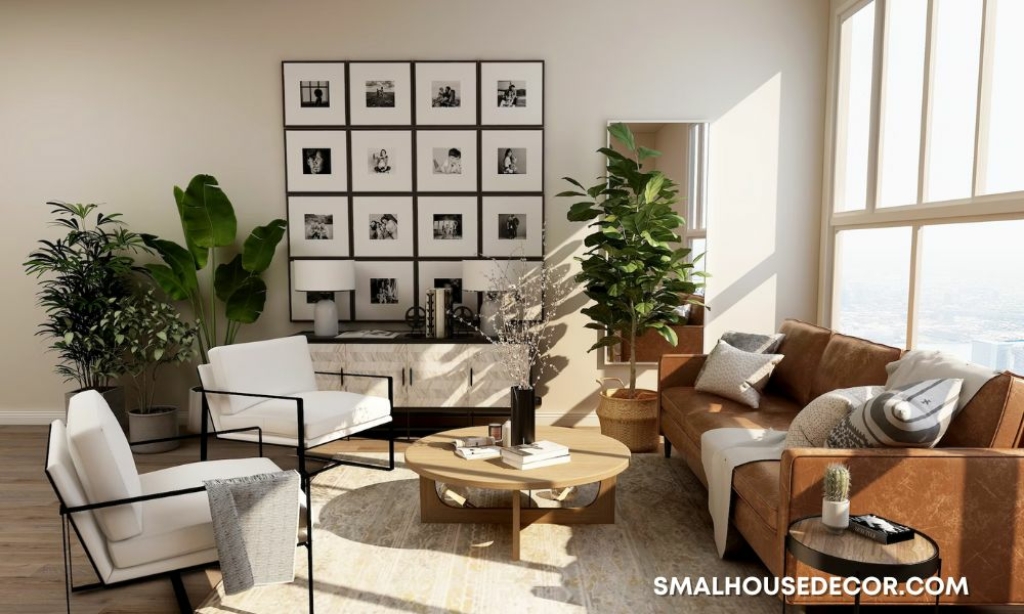
In the world of interior design, size doesn’t always matter. Whether you’re living in a cozy studio apartment, a charming cottage, or a petite urban loft, there’s an art to making even the tiniest of spaces feel open, inviting, and, above all, spacious. It’s a common challenge many of us face – the desire for more room without actually having more room. But fear not, because in this blog post, we’re about to embark on a journey through the world of interior design wizardry. We’ll uncover the secrets, tricks, and ingenious techniques that can transform your small home into a haven of spaciousness and style. Without further ado, let’s get started.
Invest in Multi-Functional Furniture
Multi-functional furniture is a key asset when it comes to making a small home appear larger and more functional. These innovative pieces are designed to serve multiple purposes, maximizing space efficiency. As highlighted by the team behind Flitch, you can even use an interior stylist to enjoy hassle-free furniture shopping for your small home. They will refine their suggestions until you are satisfied.
A prime example is a sofa bed, which can transform your living room into a guest bedroom when needed, eliminating the need for a separate guest room. By incorporating multi-functional furniture into your interior design, you can create a more versatile and spacious living environment without compromising on comfort or style.
Alaso Read: Awe-Inspiring Murphy Bed Ideas That Blow Your Mind
Use Light Colors
The strategic use of light colors is a fundamental technique in the art of making a small home appear more spacious and inviting. Light and neutral color palettes, such as soft whites, pale grays, and pastel tones, work wonders to open up a room. These shades reflect natural light, creating a bright and airy atmosphere that tricks the eye into perceiving more space than there actually is.
Light-colored walls, furniture, and decor make a room feel less cramped and more expansive, enhancing the overall sense of tranquility and comfort. When used wisely, these hues are a powerful tool in the arsenal of interior design for smaller spaces.
Hang Mirrors
Hanging mirrors strategically is a clever design hack to amplify the sense of space in a small home. Mirrors have the remarkable ability to reflect light and create an illusion of depth, making any room appear larger and brighter.
Placing mirrors across windows or in areas with ample natural light helps bounce light around, reducing shadows and enhancing the feeling of openness. Mirrored furniture, like dressers or coffee tables, can also contribute to this effect while adding a touch of elegance. By incorporating mirrors into your decor, you can transform a cramped space into one that feels more expansive, welcoming, and well-lit.
Declutter
Decluttering is an essential practice for optimizing the functionality and visual appeal of a small home. The principle is simple: less is more. Regularly removing unnecessary items and organizing belongings not only reduces physical clutter but also creates a cleaner and more spacious atmosphere. A minimalist approach to interior design ensures that only the most essential and aesthetically pleasing items are on display, reducing visual noise and enhancing the sense of space.
By decluttering, you can open up the room, making it feel more breathable and comfortable. It’s a practical and effective strategy for transforming a cramped living space into one that feels both inviting and harmonious.
Vertical Storage
Vertical storage solutions are a game-changer for small homes. When space is limited, maximizing every square inch becomes crucial, and vertical storage is the answer. Utilizing wall space with floor-to-ceiling shelves, cabinets, or bookcases not only adds ample storage but also draws the eye upward, creating an illusion of height and space.
Wall-mounted hooks, pegboards, or floating shelves are practical for organizing items without sacrificing precious floor space. These clever storage ideas allow you to keep belongings neatly arranged while preventing clutter from encroaching on your living area. By going vertical, you can transform your small home into a well-organized and visually expansive sanctuary.
Transparency
Incorporating transparency into your interior design can work wonders in making a small home feel more open and spacious. Transparent or semi-transparent materials, like glass, acrylic, or mesh, allow light to pass through and create a sense of transparency. Glass tables, for example, lend a feeling of lightness and openness to a room while maintaining functionality. Glass partitions or room dividers offer separation without visual barriers, preserving the flow of space.
Additionally, open shelving made from transparent materials can showcase your belongings while avoiding a cluttered look. By embracing transparency in design, you can enhance the sense of airiness and elegance in your small living space, making it feel larger and more inviting.
Transforming a small home into a more spacious and functional living space is entirely achievable with strategic interior design choices. Employing light colors, multi-functional furniture, mirrors, and transparent elements can work in harmony to create an illusion of openness. Combining these strategies with decluttering and maximizing vertical storage ensures that every inch of space is utilized effectively. By embracing these design tips, you can not only make the most of your limited space but also create a cozy and inviting environment that feels larger and more comfortable for everyday living.